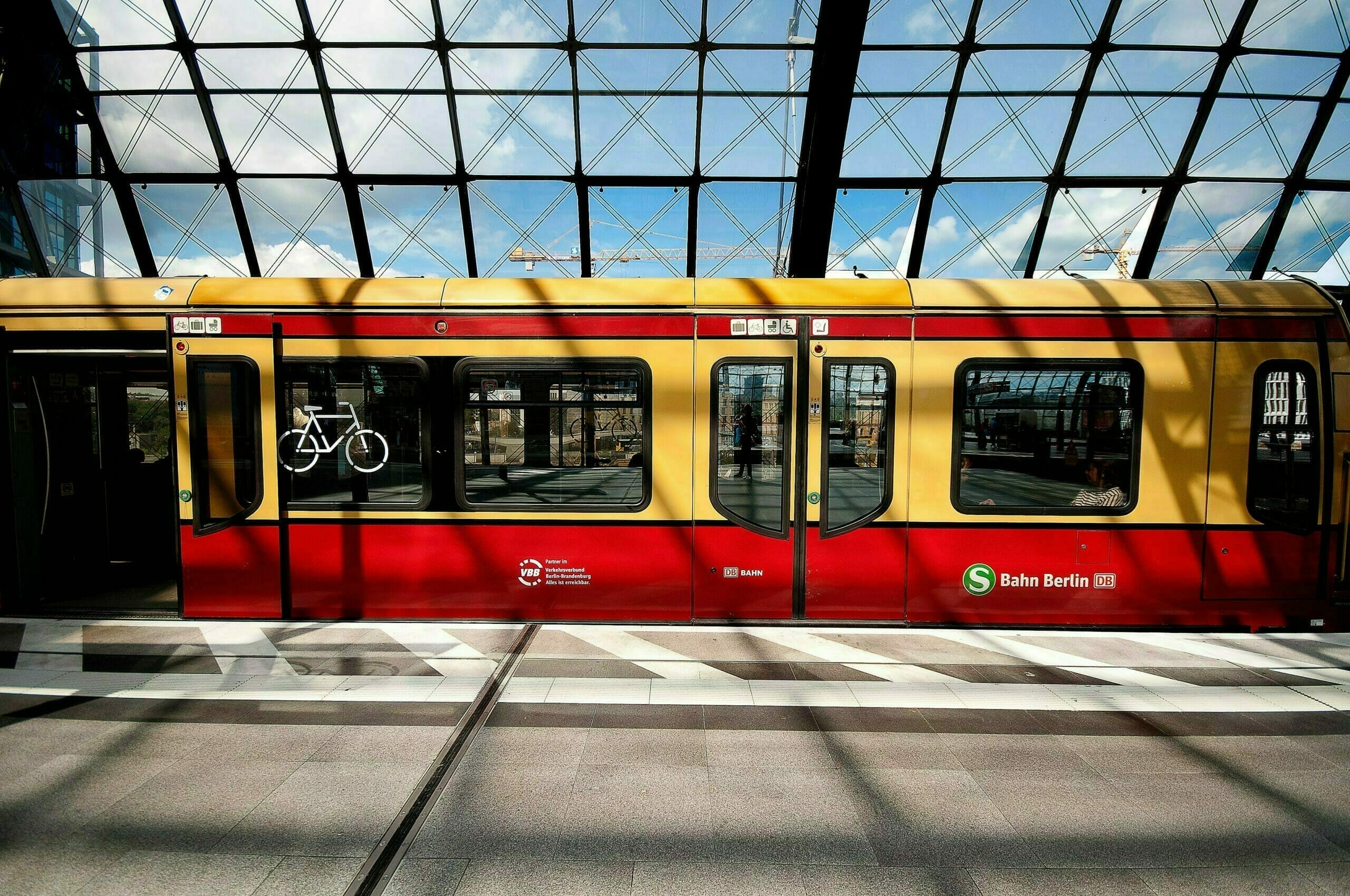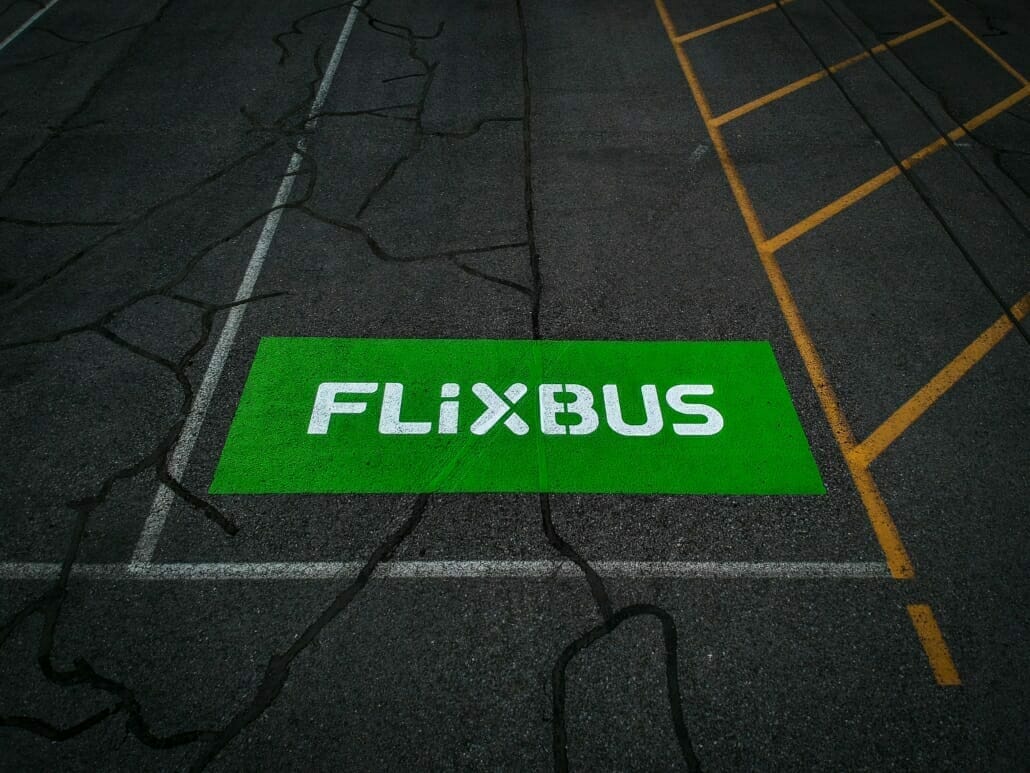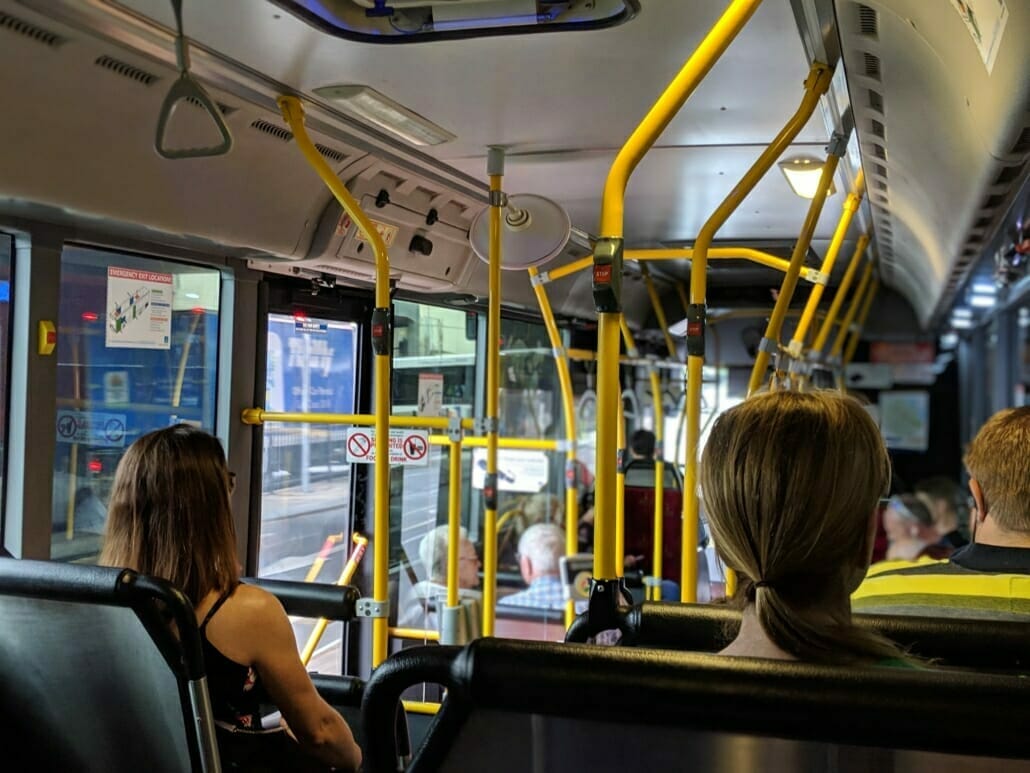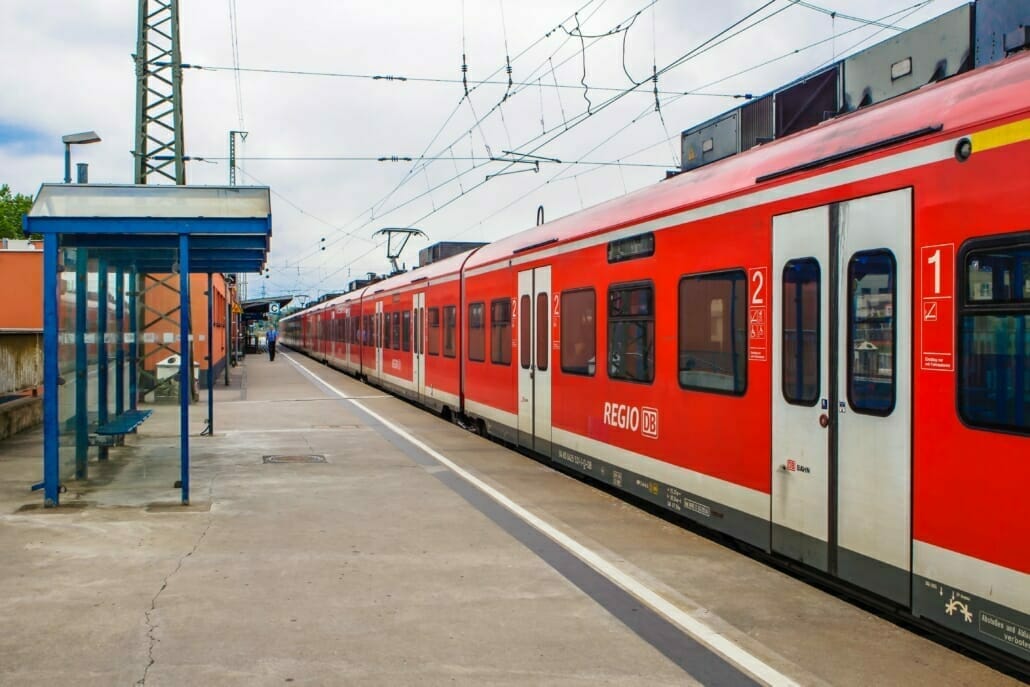Public transportation Germany

Living in a major German city or metropolitan area without a car? No problem. Thanks to the excellent public transportation systems, getting around becomes a breeze. Even medium-sized cities boast robust networks of buses, trams, and urban/suburban rail lines, efficiently connecting people from one point to another.
The diesel driving bans are not the only reason other means of transport are coming into focus as an alternative to the car. The uncomplicated accessibility of doctors, schools, and supermarkets affects the regions’ equal living conditions. Rural areas, in particular, face the challenge of how to ensure local mobility.
Public Transportation Connections in Germany
Ensuring efficient public transport connections is a key factor in assessing the quality of a city’s infrastructure. The average travel time to the nearest city center plays a vital role in determining the accessibility of workplaces, educational institutions, and medical facilities. Remarkably, 95 percent of the population in Germany can reach their nearest city center within a 45-minute commute using buses or trains.
However, it is important to note that public transportation offerings vary between urban and rural areas. While nearly 60 percent of residents in sparsely populated rural counties enjoy good public transit accessibility, around 12 percent, primarily residing in peripheral rural regions, find themselves reliant on their personal vehicles due to limited alternative options.
In stark contrast, inhabitants of major cities benefit from extensive public transportation networks. With approximately 16 percent of the population having convenient access to streetcars or subways within a mere 600-meter walking distance, urban dwellers enjoy unparalleled connectivity.
Traveling with the Deutsche Bahn
Deutsche Bahn AG, a renowned federally owned mobility and transport group, plays a crucial role in connecting cities and rural regions across Germany. With an extensive network of trains, Deutsche Bahn provides convenient and reliable transportation options for both local and long-distance travel. One notable offering is the BahnCard, a discount card designed for frequent train travelers, including commuters and avid explorers alike. By purchasing a BahnCard, passengers can enjoy significant savings of up to 50% on their fares. The BahnCard is available in two options: the BahnCard 25 and the BahnCard 50.

The BahnCard 25 proves to be a smart investment, often paying for itself after the very first use. This card grants users a 25% discount on all tickets, whether embarking on a journey from Berlin to Munich, Cologne to Stuttgart, or Bremen to Amsterdam. Additionally, the Bahncard “Europe Specials” provides extra savings for those venturing beyond Germany’s borders to explore European countries.
For those who frequently rely on train travel, the Bahncard 50 offers an even greater advantage. With this card, travelers can enjoy an impressive 50% discount on every train journey they undertake.
The process is simple:
- Purchase either the Bahncard 25 or Bahncard 50.
- Book your train ticket and apply the Bahncard discount.
- Experience the satisfaction of saving money while embarking on your safe and enjoyable journey.

The 49€ ticket: Affordable travel across Germany
We are excited to present the launch of the 49€ Ticket, also known as the Deutschlandticket, starting from May 1st, 2023. This ticket is designed to make public transportation more attractive and accessible throughout Germany.
Key facts about the 49€ Ticket:
- Coverage: The ticket allows unlimited travel on regional trains (RB, RE, S-Bahn) and other public transportation options such as buses, trams, and subways nationwide.
- Convenience: Enjoy the flexibility to plan your own itinerary and explore various cities and regions at your own pace.
- Availability: Purchase the ticket online, at ticket counters, or through the Deutsche Bahn app.
- Validity: The ticket is valid for one month of travel, making it ideal for students and commuter or longer journeys to multiple destinations in Germany.
The implementation of the 49€ Ticket by the German government serves two important purposes. Firstly, it aims to directly alleviate the financial burden on citizens due to the significant rise in costs of electricity, food, heating, and transportation. This initiative provides immediate financial relief and supports individuals in managing their expenses.
Secondly, the 49€ Ticket serves as an incentive for people to switch to environmentally friendly public transportation options and reduce their reliance on fossil fuels.
By offering an affordable and accessible ticket for nationwide travel, the government encourages individuals to choose the sustainable option of using public transportation, thereby contributing to the reduction of carbon emissions and promoting a greener future.

Traveling with Flixbus

When it comes to bus travel in Germany, Flixbus stands out as the largest and most reputable company in the industry. With a network of 2500 destinations across 40 countries, Flixbus offers an extensive range of long-distance bus services. Whether you’re planning a visit to family, a trip to the mountains, or simply seeking a break from everyday life, Flixbus provides a convenient and affordable alternative to trains or cars.
Flixbus allows you to explore a diverse array of destinations, both within Germany and beyond. From stunning mountain ranges to captivating coastal regions, Flixbus connects you to various European countries. You can easily travel to Austria, the Netherlands, Italy, Denmark, France, Croatia, the Czech Republic, and more. With bus tickets starting from as low as 5€, Flixbus offers one of the most cost-effective ways to travel within Germany and Europe.
When you choose Flixbus, you enjoy several advantages that enhance your travel experience. Stay connected with free onboard Wi-Fi throughout your journey, ensuring that you can stay in touch or make the most of your travel time. Flixbus also guarantees your seat, allowing you to relax and enjoy the trip without worrying about finding a place to sit. Additionally, flexible booking and rebooking options provide convenience and peace of mind.
To make your journey even more comfortable, Flixbus provides amenities such as power sockets, allowing you to stay powered up and connected. Snacks and drinks are available onboard, ensuring that you can satisfy your cravings during the trip.
With all these benefits and more, it’s worth exploring Flixbus for your travel needs. Check out the offers and start planning your next adventure with Flixbus.
Car culture dominates in rural regions of Germany
When it comes to transportation choices in Germany, there is a stark contrast between urban and rural areas. While up to one-fifth of trips in urban areas are made by public transport, the share of public transport in rural regions is significantly lower, accounting for only 5 to 7 percent of the total traffic volume. In these areas, car ownership is the norm, with 90 percent of households having at least one car. The reliance on cars in rural regions continues to grow, reflecting a high degree of car orientation.
However, there has been a slight increase in the use of public transport in recent years. In Germany, the average daily distance traveled per person is 39 kilometers, and public transport accounts for about one in ten journeys nationwide. This represents a modest improvement compared to 2002 when only one in twelve trips was made using public transport. Additionally, bicycles have gained popularity, with their share of all journeys rising from 8 to 11 percent since 2002. Cars still dominate, accounting for nearly 60 percent of trips in Germany, as reported by the BMVI study “Mobility in Germany 2017.”
To address the challenge of ensuring mobility in rural areas, there is a need for innovative solutions. Conventional scheduled public transport may not be sufficient or feasible in many of these regions. However, there are already examples of good practices that showcase alternative approaches to improving mobility in rural areas. These initiatives aim to provide better access to essential services such as healthcare, supermarkets, and recreational facilities without relying solely on cars.
As the transportation landscape continues to evolve, the younger generation’s attitudes towards cars are shifting, with the car no longer holding the same status symbol it once did. However, it’s worth noting that the older generation’s affinity for cars remains strong. The future of transportation in rural regions will require a careful balance between meeting the changing needs and preferences of different age groups while ensuring efficient and accessible mobility options for all.

Buses in rural regions in Germany
In rural regions of Germany, various innovative bus projects are playing a crucial role in improving accessibility and transportation options for local communities. These initiatives aim to address the unique challenges faced by rural areas and ensure that residents have convenient access to essential services and transportation.
One such initiative is Kita-Mobil, which provides door-to-door transportation for children in the Beetzendorf-Diesdorf municipality in Saxony-Anhalt, ensuring they can easily reach daycare centers. In the Uckermark region, the Kombibus serves both passengers and goods, facilitating local transportation needs.
Volunteer drivers operate the Schüttorf-Ohne-Wettringen citizens’ bus, connecting two communities in North Rhine-Westphalia and Lower Saxony. This service goes beyond passenger transportation, as it also assists with the delivery of medicines directly at bus stops or village stores. Additionally, the Zahnarztmobil Osterwieck in Saxony-Anhalt provides vital medical care for elderly and immobile patients.
Integrating private transport and public vehicle capacities
To improve mobility in rural regions, efforts are being made to integrate private transport with public vehicle capacities. The NVV-Mobilfalt concept in Hesse links local public transport with private cars, aiming to reduce the reliance on multiple cars within a community. In the Vogelsberg region of Hesse, an electric car-sharing program is being tested to discourage the need for second or third cars.
Projects like “MOREMA” in Central Lower Saxony activate underutilized public and semi-public vehicle capacities for alternative public transport, including fire department minibusses. These initiatives maximize existing resources and offer flexible transportation solutions to meet the diverse needs of rural communities.
Overcoming difficulties in accessibility
Overcoming challenges in accessibility is a key focus of many initiatives. “MObile VIElfalt” in the Borken district of North Rhine-Westphalia aims to better connect small communities to central areas, ensuring improved access to services. Similarly, “Mobisaar – Mobility for All” in Saarland is dedicated to enabling individuals with limited mobility to utilize buses and trains in rural areas.
In the Schaumburg district of Lower Saxony, specialized services such as Fifty-Fifty Taxi and Senior Citizens’ Taxi cater to the mobility needs of young people and senior citizens outside regular public transport hours.
These innovative bus projects demonstrate the commitment of local communities, authorities, and volunteers to address transportation gaps in rural regions. By providing reliable and accessible public transportation options, these initiatives contribute to enhancing the overall quality of life for residents in rural Germany.

Learning from international examples
Germany is not the only country facing the challenge of ensuring mobility in rural areas. Across Europe, there are inspiring examples that provide valuable insights.
In southeastern Finland, the Mallu Bus serves as a mobile health center with broadband access, making scheduled stops in eight participating communities every other day.
In 40 communities north of Luxembourg, the slow bus operates as a “call bus” system. Using a computer system, registrations for trips are taken, and routes are calculated to accommodate the travel preferences of as many people as possible with shared trips.
Mobility is an essential topic in the demographic strategy
Recognizing the significance of mobility in the demographic strategy, State Secretary Kerber emphasizes its role in promoting equal living conditions in regions. The German government’s demographic policy will prioritize achieving “equal living conditions” in the years to come, which aligns with the fundamental goals of the federal government’s demographic strategy.
The model project “Securing long-term supply and mobility in rural areas,” conducted from 2016 to 2018, accompanied the dialog process on the demographic strategy as a practical initiative. Across 18 model regions, over 40 mobility improvement initiatives were launched to address the specific challenges faced in rural areas.



